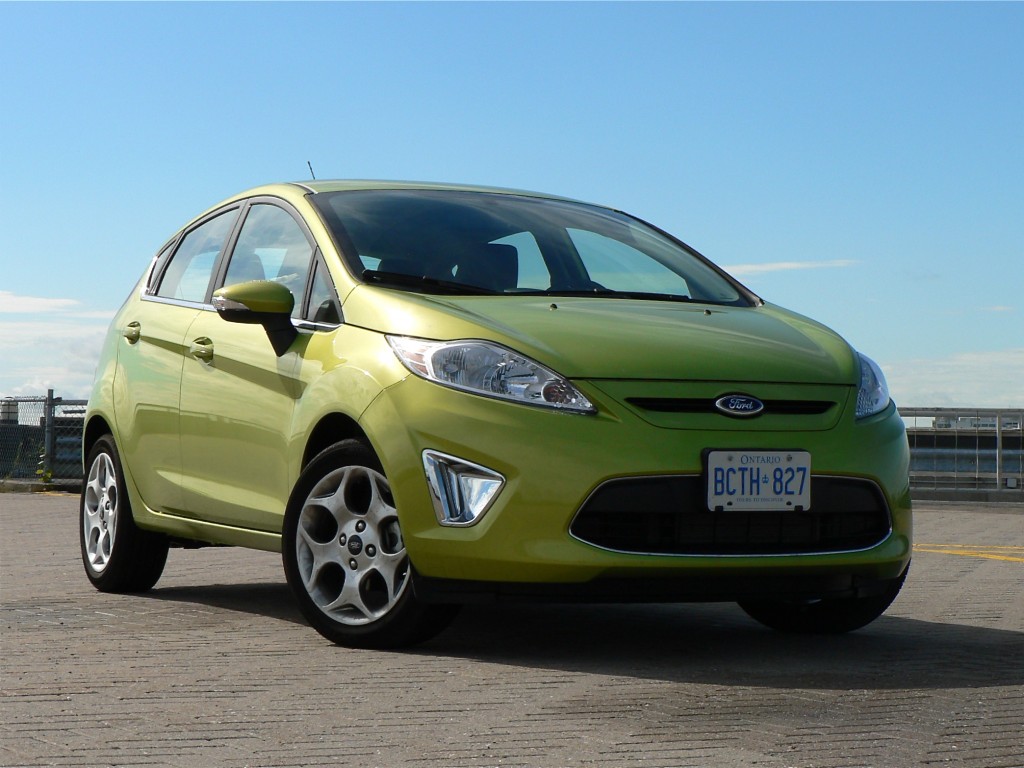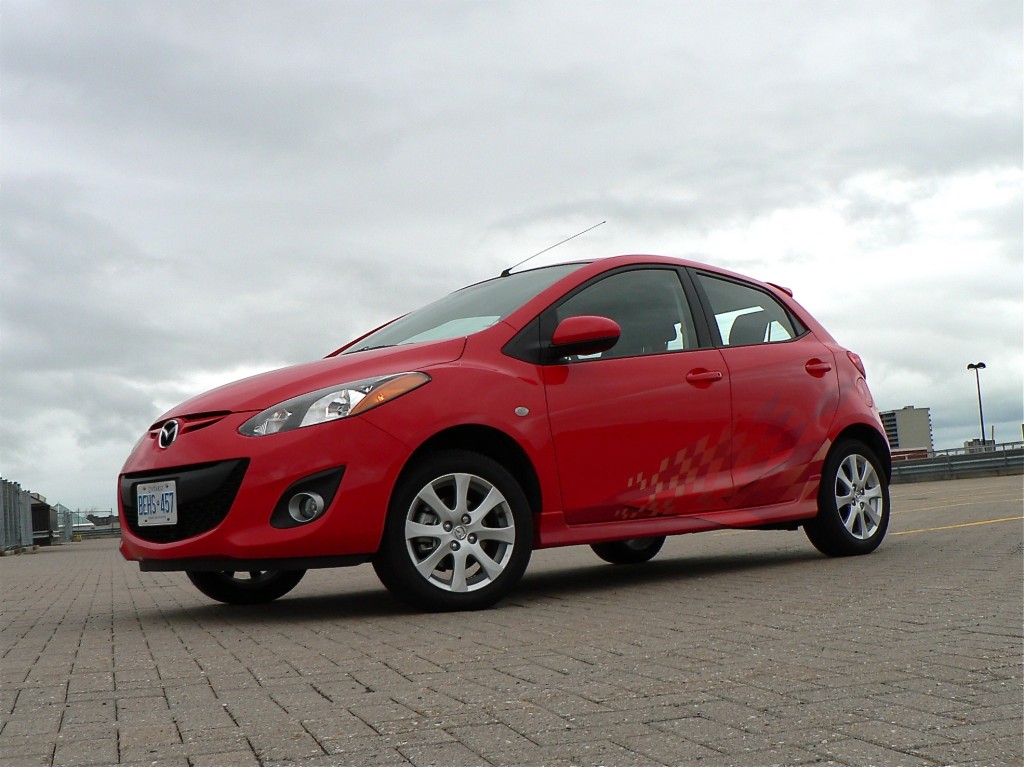Comparo: 2011 Ford Fiesta SES vs. Mazda2 GS
[svgallery name="2011_Ford-Fiesta_vs_Mazda2_hirez"]Family feud
Which new supermini hatch warms the hearts of drivers the most?
By John LeBlanc Small cars are like cod liver oil and sit-ups: Everyone appreciates their virtues, but few of us actually partake. So despite the rhetoric that Canadians love small cars — especially hatchbacks — the sales figures say otherwise. Sales of new subcompacts in Canada are off by almost 20 per cent compared with last year, while pickup trucks are up almost 14 per cent. But with a desire to attract younger buyers (and lower fleet fuel-consumption averages) automakers have been breeding new subcompacts like rabbits. Two of the most recent are the new 2011 Ford Fiesta and Mazda2. Both the Ford and Mazda have been on sale in Europe for a few years and they share the same platform. So decent road manners are assumed. Which subcompact hatchback, though, is the better small car to drive?
SECOND PLACE: 2011 Ford Fiesta SES
Making a return to North America as part of Ford’s new global “One Ford” product plan, the 2011 Fiesta subcompact available to us is essentially the same car sold around the world. While the base Fiesta SE hatch starts at nearly $3,000 more than the base $13,995 Mazda2 GX, it offers more standard kit, like air-conditioning. Our relatively loaded $18,899 Fiesta SES, though, is more comparable to our top-line $18,195 Mazda2 GS competitor. A 1.6-litre four-cylinder engine, with 120 hp and 112 lb-ft of torque, powers all Fiestas. Our Fiesta tester came with the standard five-speed manual. A unique-in-this-class, six-speed dual-clutch autobox is a $1,250 option. Fuel economy between the Ford and Mazda is almost identical: the Mazda is rated at 7.2L/100 km city, 5.6L highway; the Ford: 7.1 L/100 km city and 5.3 L/100 km highway, respectively. The Mexican-made Ford may offer more juice than the smaller-engined Mazda, but it weighs about 100 kg more. Unsurprisingly, the extra heft affects performance and handling. As if it’s wearing an extra layer of clothing, not only is the Fiesta SES about one second behind the Mazda2 GS in the run to 100 km (10.3 versus 9.3 seconds), it feels less lively when the roads turn. While its long-throw shifter and numb steering pale in comparison to the sharper controls of the Mazda, we found some of the Fiesta’s interior instrumentation and controls more fashion than function. What the smallest Ford does offer is a safe landing pad for buyers downsizing. It’s much quieter at speed than the Mazda2, offers a much more comfortable ride, and everything the driver touches in the Fiesta’s cabin — steering wheel, shift knob, seats — feels more grown up, solid and luxurious than its Japanese platform-mate. By offering a sedan version (which starts at $12,999), and big car features like heated leather seats, multiple interior trim combinations, Ford’s Sync hands-free system, and a dual-clutch automatic transmission, the Fiesta may not be the most fun subcompact car to drive here. But it will appeal to a wider group of customers.
FIRST PLACE: 2011 Mazda Mazda2 GS
You may have already chosen the Fiesta as your next subcompact of choice. No fault in that. But if you want one of the best driving small cars you can buy, the Mazda2 impresses on many levels. In regards to comfort and convenience, the top-line Mazda2 GS adds such items as air conditioning, alloy wheels, a spoiler package, keyless entry, trip computer, and other trim details of the more basic GX. Yet any Mazda2 offers some distinct advantages over a Fiesta. Even though the Mazda is lighter, and 117 mm shorter in overall length than the Ford, you wouldn’t notice it from its cabin dimensions, and there’s more cargo room behind the rear seats. Less adventurous than the Fiesta’s more fashionable interior design, (there’s no “big car” options like leather seating, telescoping steering wheel or a sunroof available at any price), the Mazda’s driver’s instrumentation and centre stack controls are very much in the same vein as other current cars from the Japanese automaker: straightforward, gimmick-free, and of high quality in feel. With less weight to haul around, the Mazda can make do with a smaller (1.5-litre), and less powerful (100 hp and 98 lb-ft) four-cylinder engine — and still be quicker than the Ford. But the slick-shifting five-speed manual is a good match. Compared to the Fiesta’s five-speed, the Mazda2 is much slicker, with shorter throws and more accurate engagement. Overall, the Mazda2 feels less like a small car trying to be a big car and more like a subcompact hatch trying to be a Miata. Instead of isolating the driver from the road (as in the Fiesta), the Mazda2 allows more intimacy. Yes. You’ll feel more bumps and hear more road noise in the smallest Mazda, but the 2 is more anxious to string corners together, where the Fiesta is less interested. It can’t compete with the Ford on features. For example, instead of a dual-clutch six-speed auto, the 2 makes due with an old-fashioned four-speed autobox. But if small car driving pleasure is at the top of your new small car-shopping list, the Mazda2 delivers plenty of subcompact smiles.Comments
2 Responses to “Comparo: 2011 Ford Fiesta SES vs. Mazda2 GS”





January 6th, 2011 @ 11:19 am
[…] and eleven is shaping up to be a big year for little cars. New car buyers will not only get a fresh Ford Fiesta, Mazda2, and Fiat 500 , Nissan Versa, and Hyundai Accent to choose from, debuting next week at the Detroit […]
June 30th, 2011 @ 8:30 am
[…] example, starting at $13,199, the 2012 Accent sedan splits the difference between the $12,999 Ford Fiesta sedan and the $14,990 Toyota Yaris. Arguably, the new four-door Accent hatchback (that replaces the […]